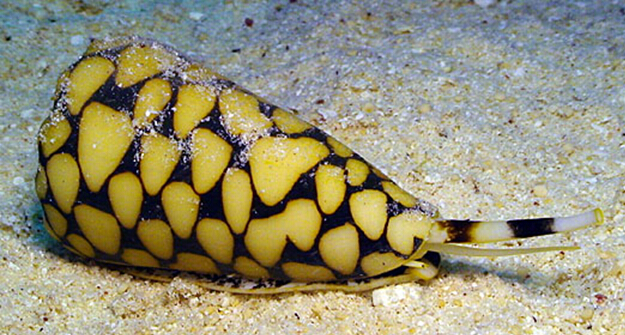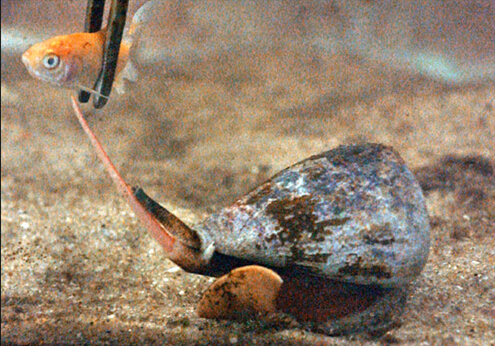
Introduction:
One kind of the venom from Queensland cone snail hidden thousands of peptide toxins, which were potentially contain the value of the precious drugs, possibly provide new leads of pain and cancer drugs. In recent PNAS study, the researchers described a new method to analyze venom toxin structure.
Paul Alewood is the University of Queensland professor of molecular biology, he said the study is the first to give a present in a single cone snail venom toxins. This cone snail research called conus episcopatus, living on Australia's east coast, it is one of the 700 kinds of different cone snail. Cone snail venom mixed with many complex chemicals, and most of these toxins in the past have been ignored.
It characterized by a cone snail venom intricate "device", responsible for the biosynthesis and provide a complex mixture of cysteine-rich peptide toxins. These toxins are folded into highly structured framework (Frameworks), enabling them to potent and selective heterologous ion channel and receptor interactions.

Containing precise measurement, analysis, new methods of various compositions of the structure, activity and protein in the venom, the use of biochemical and bioinformatics tools, and the researchers found expression in a single cone snail toxin peptides largest number one of 3305 new premises have toxin sequences. CC-CC-CC inhibitor cystine knot which contains the sequence characteristics and pharmacological activity of the CC-CC. More importantly, they also found six original "framework "(three-dimensional shape of the molecule) can be used as prodrugs. In the past 25 years a total of 25 well-known framework is found, many of which have been referenced for the previous several diseases or prodrugs of them.
Researchers estimate that their newfound framework will also lead to new drug development for the treatment of pain, cancer and a range of other diseases. Alewood said: "We expect a lot of interesting elements to be found in the venom of other species, we are keen to use our new ways to explore these newly discovered this method we can also be used in other related fields, such as research from the cell. Protein expression. This will help us better understand the biology, looking for patterns of disease, or the discovery of potential new drugs. "
Reference:
Optimized deep-targeted proteotranscriptomic profiling reveals unexplored Conus toxin diversity and novel cysteine frameworks
DOI: 10.1073/pnas.1501334112
Cone snails are predatory marine gastropods characterized by a sophisticated venom apparatus responsible for the biosynthesis and delivery of complex mixtures of cysteine-rich toxin peptides. These conotoxins fold into small highly structured frameworks, allowing them to potently and selectively interact with heterologous ion channels and receptors. Approximately 2,000 toxins from an estimated number of >70,000 bioactive peptides have been identified in the genus Conus to date. Here, we describe a high-resolution interrogation of the transcriptomes (available at www.ddbj.nig.ac.jp) and proteomes of the diverse compartments of the Conus episcopatus venom apparatus. Using biochemical and bioinformatic tools, we found the highest number of conopeptides yet discovered in a single Conus specimen, with 3,305 novel precursor toxin sequences classified into 9 known superfamilies (A, I1, I2, M, O1, O2, S, T, Z), and identified 16 new superfamilies showing unique signal peptide signatures. We were also able to depict the largest population of venom peptides containing the pharmacologically active C-C-CC-C-C inhibitor cystine knot and CC-C-C motifs (168 and 44 toxins, respectively), as well as 208 new conotoxins displaying odd numbers of cysteine residues derived from known conotoxin motifs. Importantly, six novel cysteine-rich frameworks were revealed which may have novel pharmacology. Finally, analyses of codon usage bias and RNA-editing processes of the conotoxin transcripts demonstrate a specific conservation of the cysteine skeleton at the nucleic acid level and provide new insights about the origin of sequence hypervariablity in mature toxin regions.
Souce: Novopro 2015-07-16
